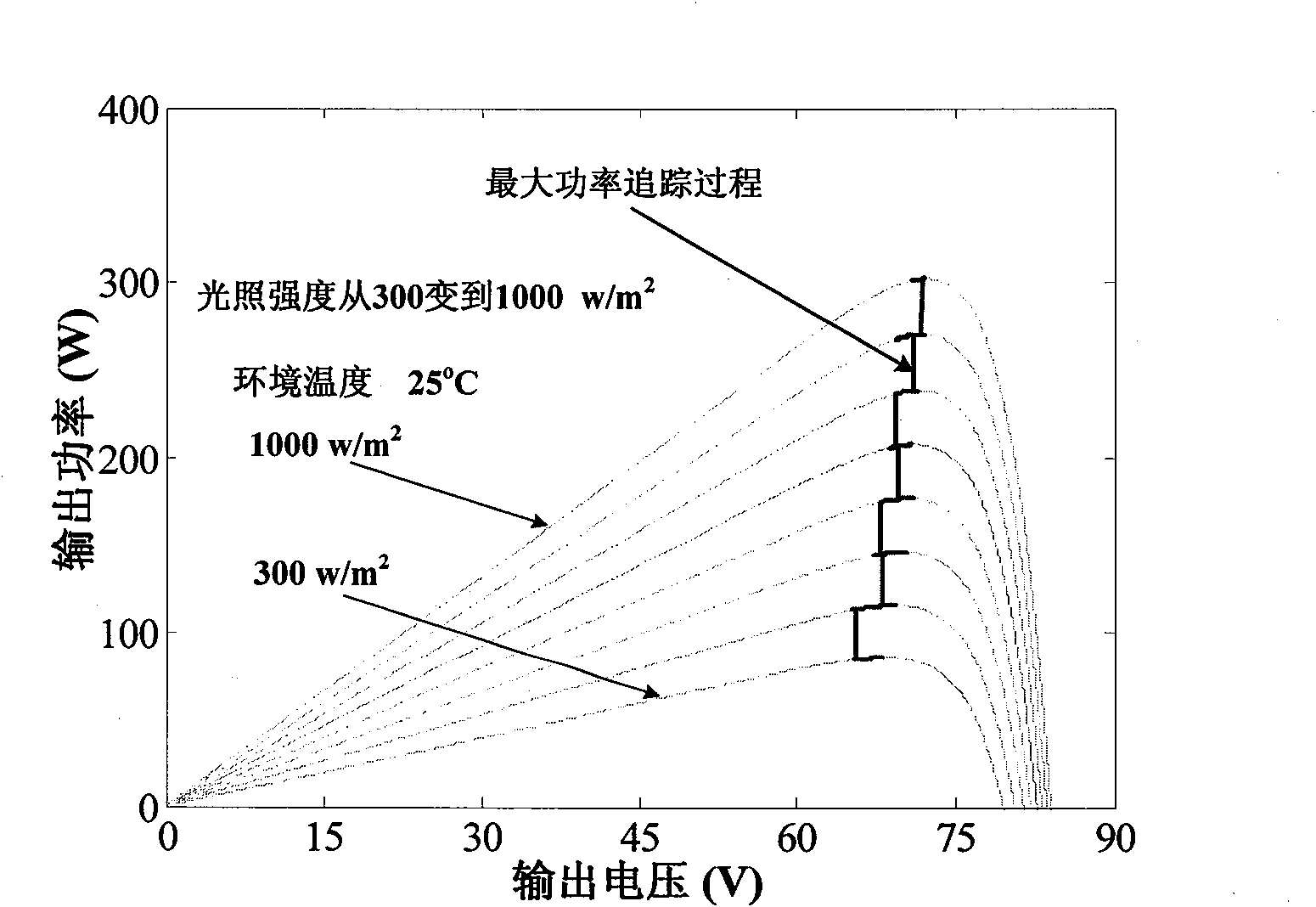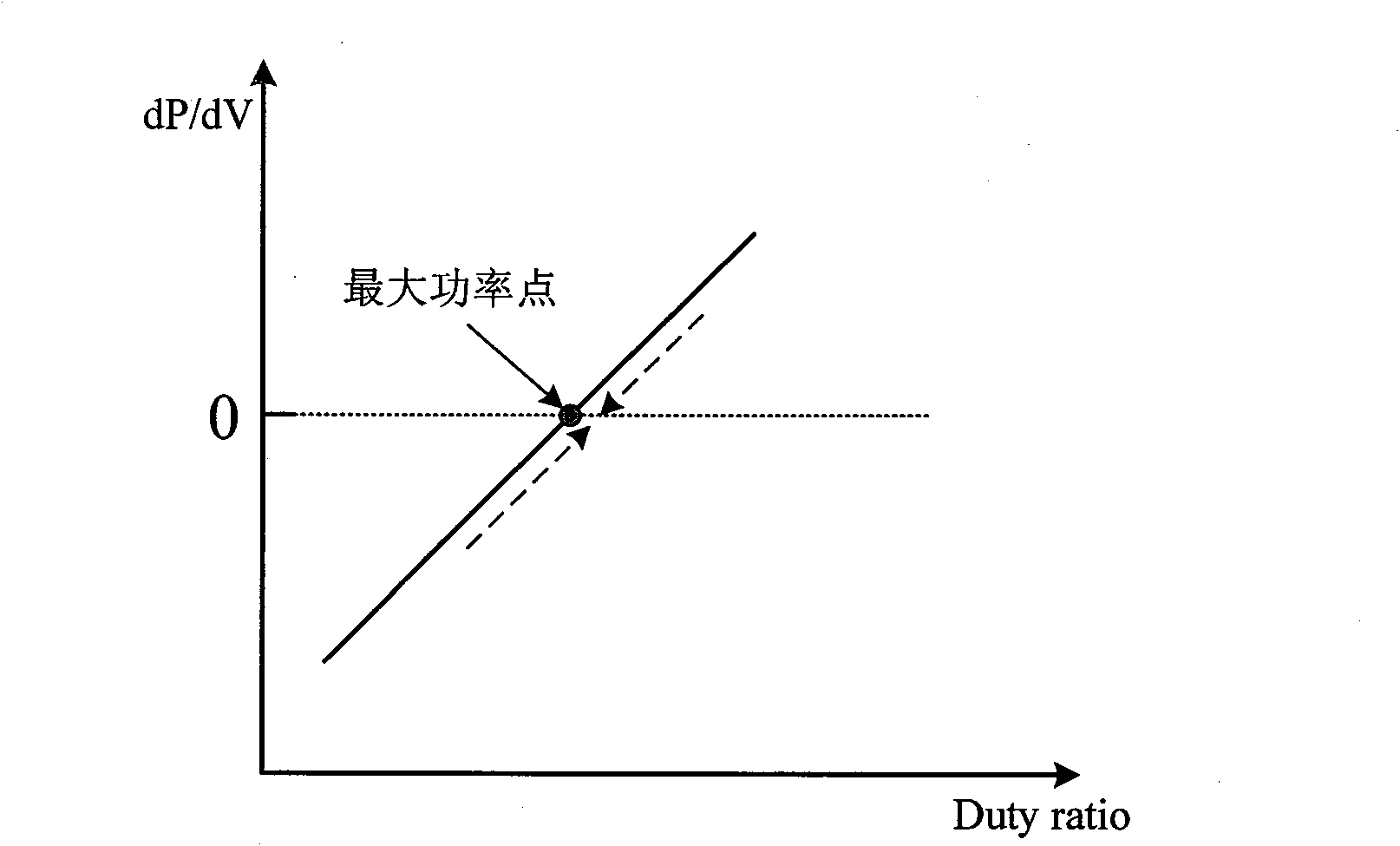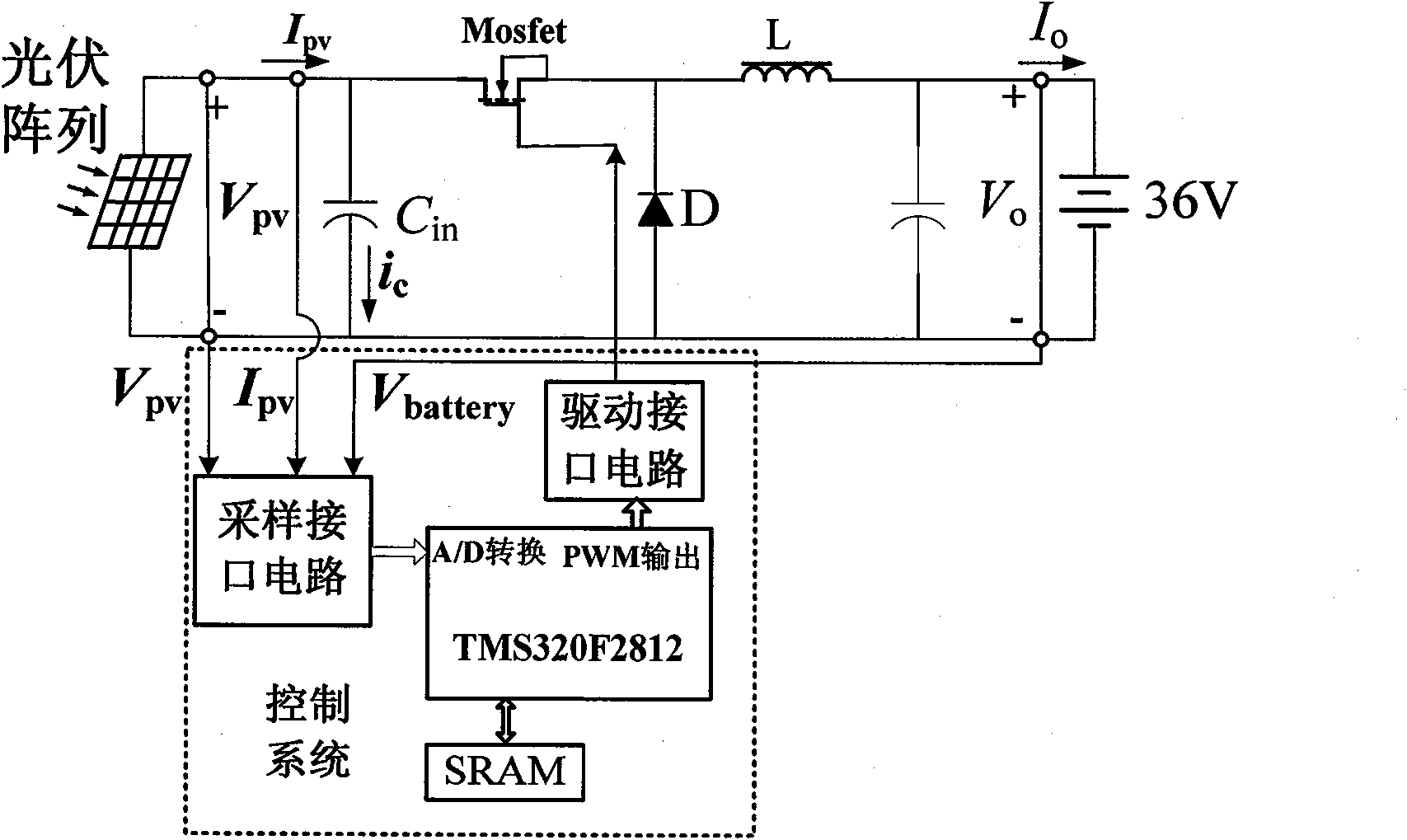Direct current voltage regulation-based maximum power point tracking method for photovoltaic array with stable charging circuit
A technology of maximum power tracking and photovoltaic array, which is applied to battery circuit devices, circuit devices, and energy-saving charging equipment, etc., and can solve problems such as extra power loss and unstable methods
- Summary
- Abstract
- Description
- Claims
- Application Information
AI Technical Summary
Problems solved by technology
Method used
Image
Examples
Embodiment Construction
[0025] Such as image 3 As shown, the independent photovoltaic power generation system applying the maximum power point tracking technology described in the present invention includes:
[0026] 1) Solar cell array: The solar cell array is the input of the independent photovoltaic power generation system, which provides electric energy for the whole system. Under daylight conditions, the solar cell converts the received light energy into electrical energy, and charges the battery through the charging circuit; after dark, the solar cell stops working and the output terminal is open.
[0027] 2) DC bus input capacitor: it mainly plays a role of filtering.
[0028] 3) Battery: As the energy storage link of an independent photovoltaic power generation system, the battery converts the electrical energy output by the solar cell into chemical energy and stores it during the day, and then converts it back into electrical energy and outputs it to the load at night. The power supply of...
PUM
 Login to View More
Login to View More Abstract
Description
Claims
Application Information
 Login to View More
Login to View More - R&D
- Intellectual Property
- Life Sciences
- Materials
- Tech Scout
- Unparalleled Data Quality
- Higher Quality Content
- 60% Fewer Hallucinations
Browse by: Latest US Patents, China's latest patents, Technical Efficacy Thesaurus, Application Domain, Technology Topic, Popular Technical Reports.
© 2025 PatSnap. All rights reserved.Legal|Privacy policy|Modern Slavery Act Transparency Statement|Sitemap|About US| Contact US: help@patsnap.com



